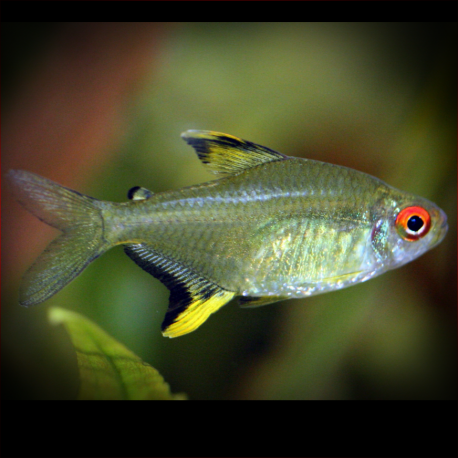More info
Datasheet
| Maximum Size | 5.5cm / 2.17inches |
General Description
Hyphessobrycon Auca, a member of the Characidae family under the Characiformes order, closely resembles H. anisitsi but can be distinguished by specific anatomical features such as a single maxillary tooth always with 5 cusps, dentary depth constituting 40.7-47.6% of dentary length, and the presence of small hooks on the dorsal, caudal, and pectoral fins in males.
Aquarium Setup
For maintaining Hyphessobrycon Auca in captivity, an aquarium setup mimicking its natural habitat is advisable. This includes soft and slightly acidic water with a pH range of 5.6-6.8, low conductivity of 11.6-20.8 µS cm-1, and a hardness of 2-5 mg CaCo3 l-1. Additionally, the substrate should primarily consist of sand with submerged vegetation dominated by Egeria najas and marginal areas featuring floating Eichhornia.
Behaviour
The behavioral traits of Hyphessobrycon Auca in its natural habitat remain relatively understudied; however, typical behavior in captivity includes shoaling tendencies and active swimming patterns. Males may exhibit territorial behavior during breeding periods.
Feeding and Diet
In the wild, Hyphessobrycon Auca likely feeds on small invertebrates, zooplankton, and plant matter. In an aquarium setting, they accept a varied diet comprising high-quality flake food, live or frozen brine shrimp, bloodworms, and commercial tropical fish pellets or flakes.
Reproduction & Dimorphism
Information regarding the reproduction and dimorphism of Hyphessobrycon Auca is scarce. However, like many tetra species, it is presumed to be an egg-scattering, non-guarding species where the adults scatter adhesive eggs among plants. Males may display more intense coloration during the breeding season.
Habitat and Distribution
Hyphessobrycon Auca is exclusively known from two ponds within the Esteros del Iberá wetlands in the Corrientes province of northern Argentina. These ponds are situated on a sand bar formed by the Paraná river during the Pleistocene and characterized by rain-fed, slightly acidic, and soft water with submerged vegetation. Sympatric fish species within its habitat include Acestrorhynchus pantaneiro, Aphyocharax rathbuni, and others.

